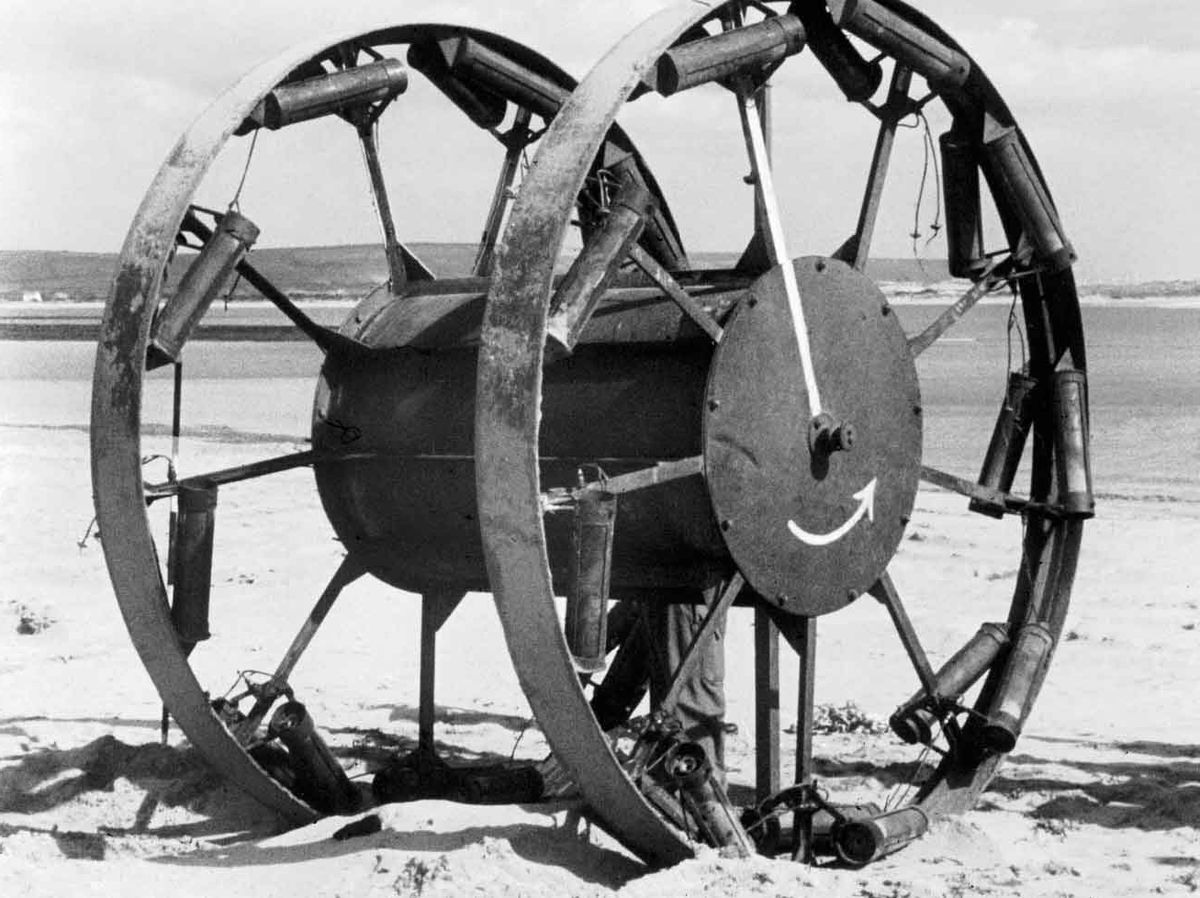
What was the Panjandrum? Imagine a massive, rocket-powered wheel designed to blast through enemy defenses during World War II. This bizarre contraption, known as the Great Panjandrum, was a British invention aimed at breaching fortified beachheads. Created by the British Admiralty's Directorate of Miscellaneous Weapons Development, it was essentially a giant, explosive-laden drum with rockets attached to its sides. The idea was to launch it from a landing craft, letting it roll towards enemy fortifications, where it would explode, clearing the way for troops. Despite its ambitious design, the Panjandrum never saw combat due to its unpredictable and often comical test runs. Curious about more quirky details? Keep reading to uncover 35 fascinating facts about this peculiar wartime invention!
Key Takeaways:
- "Panjandrum" originated as a whimsical word in literature and later became associated with a failed military device. Despite its history, it has left a lasting impact on culture, language, and everyday life.
- The term "Panjandrum" has transcended its origins, appearing in media, science, and art. It continues to inspire creativity and add a touch of whimsy to various aspects of popular culture.
The Origins of Panjandrum
The word "Panjandrum" has an interesting history. It’s not just a quirky term; it has roots in literature and military history.
- Coined by Samuel Foote: The term "Panjandrum" was first used by playwright Samuel Foote in 1755. He created it as part of a nonsensical passage to test the memory of actor Charles Macklin.
- Literary Nonsense: Foote’s passage was filled with gibberish, and "Panjandrum" was the most memorable word. It became famous for its whimsical sound.
- Meaning: Over time, "Panjandrum" came to mean a person who has or claims to have a great deal of authority or influence.
Panjandrum in Military History
The term took on a new life during World War II, when it was used to name a peculiar military device.
- Great Panjandrum: The Great Panjandrum was a large, rocket-propelled cart designed by the British military.
- Purpose: It was intended to breach the Atlantic Wall defenses during the D-Day landings.
- Design: The device consisted of two large wheels connected by a drum filled with explosives.
- Rocket Propulsion: It was powered by rockets attached to the wheels, meant to propel it towards enemy defenses.
- Testing: Initial tests were disastrous, with the device often veering off course or exploding prematurely.
- Abandonment: Due to its unpredictability and danger, the project was eventually abandoned.
Cultural Impact of Panjandrum
Despite its failure as a military device, the term "Panjandrum" has left a lasting mark on culture and language.
- Symbol of Folly: The Great Panjandrum has become a symbol of overambitious and impractical projects.
- Literary References: Authors like Rudyard Kipling and James Joyce have referenced "Panjandrum" in their works.
- Modern Usage: Today, "Panjandrum" is often used to describe someone who is self-important or pompous.
Fun Facts about Panjandrum
The quirky nature of the word and its history has led to some interesting trivia.
- Longest Word: At one point, "Panjandrum" was considered one of the longest words in the English language.
- Board Games: The term has been used in various board games and puzzles, adding a touch of whimsy.
- Music: Bands and musicians have used "Panjandrum" as a name or in lyrics, embracing its playful sound.
- Art: Artists have depicted the Great Panjandrum in various forms, from paintings to sculptures.
- Education: Teachers sometimes use the word to engage students in vocabulary lessons due to its unique history.
Panjandrum in Modern Media
The term continues to pop up in various forms of media, keeping its legacy alive.
- Television: TV shows and cartoons have referenced "Panjandrum" in episodes, often as a humorous nod.
- Movies: Films set during World War II sometimes mention the Great Panjandrum, highlighting its bizarre design.
- Comics: Comic books and graphic novels have included "Panjandrum" as a character name or plot device.
- Video Games: Some video games feature levels or characters named after the Great Panjandrum, adding an element of historical trivia.
Panjandrum in Everyday Language
The word has found its way into everyday conversations, often used to describe certain types of people or situations.
- Office Jargon: In some workplaces, a "Panjandrum" might refer to a boss who is overly authoritative.
- Political Satire: Political commentators sometimes use "Panjandrum" to describe pompous politicians.
- Social Media: The term has been hashtagged and meme-ified, bringing it into the digital age.
- Education: Teachers use "Panjandrum" to describe overly complicated or impractical educational policies.
Panjandrum in Science and Technology
Even in the fields of science and technology, the term has found a niche.
- Engineering: Engineers sometimes refer to overly complex machines as "Panjandrums."
- Robotics: Some experimental robots have been humorously named after the Great Panjandrum.
- Space Exploration: The term has been used to describe ambitious but impractical space missions.
- Innovation: In tech circles, a "Panjandrum" might refer to a gadget that promises much but delivers little.
Panjandrum in Literature and Art
The word continues to inspire writers and artists, adding a touch of whimsy to their works.
- Children’s Books: Authors of children’s literature often use "Panjandrum" to create fantastical characters.
- Poetry: Poets have used the term to add a playful element to their verses.
- Theater: Playwrights sometimes include a "Panjandrum" character to satirize authority figures.
- Visual Arts: Painters and sculptors have created works inspired by the Great Panjandrum, blending history with creativity.
Panjandrum in Popular Culture
The term has even made its way into popular culture, appearing in unexpected places.
- Fashion: Some fashion designers have named collections or pieces after "Panjandrum," embracing its quirky charm.
- Food and Drink: Restaurants and bars have created dishes and cocktails named after the Great Panjandrum, adding a historical twist to their menus.
The Final Word on Panjandrum
Panjandrum, a quirky piece of WWII history, never saw combat but left a lasting impression. This massive, rocket-powered wheel was designed to breach enemy defenses but proved too unpredictable. Despite its failure, Panjandrum showcased the creativity and daring of wartime engineers. It’s a reminder that not all innovations succeed, yet they contribute to progress. The story of Panjandrum is a fascinating chapter in military history, blending ingenuity with a touch of absurdity. It’s a testament to human creativity and the relentless pursuit of new ideas, even when they don’t pan out as planned. So, next time you hear about Panjandrum, remember it as a symbol of bold experimentation.
Frequently Asked Questions
Was this page helpful?
Our commitment to delivering trustworthy and engaging content is at the heart of what we do. Each fact on our site is contributed by real users like you, bringing a wealth of diverse insights and information. To ensure the highest standards of accuracy and reliability, our dedicated editors meticulously review each submission. This process guarantees that the facts we share are not only fascinating but also credible. Trust in our commitment to quality and authenticity as you explore and learn with us.


